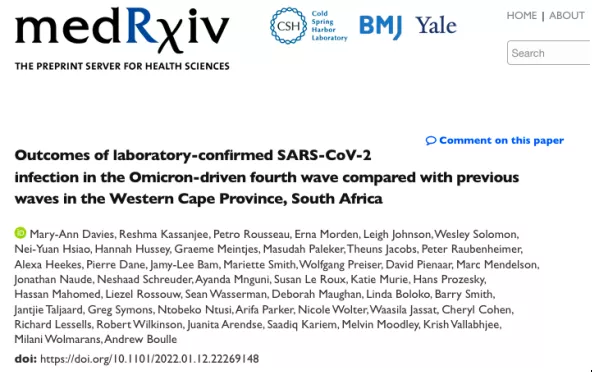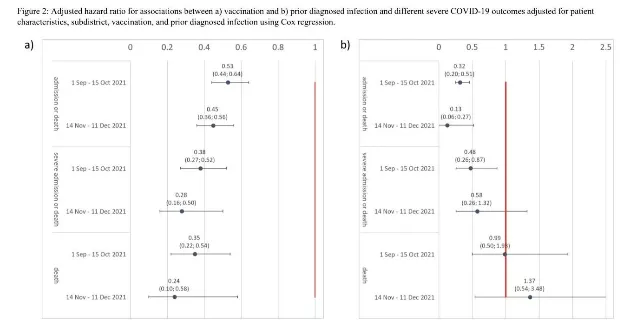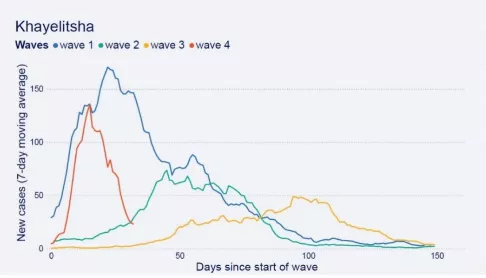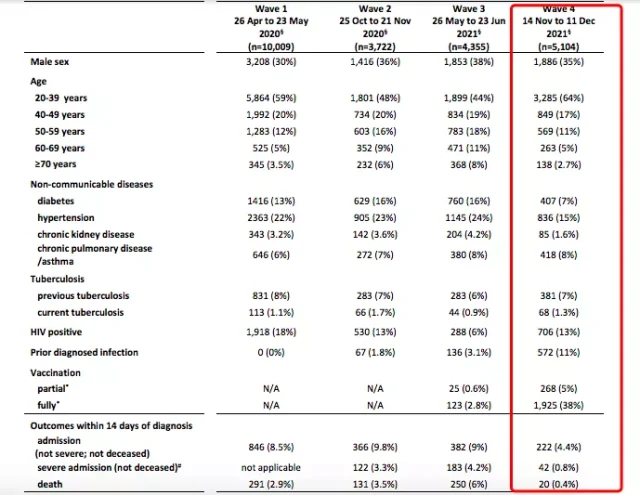South Africa publishes latest data: Omicron was less risk of severe disease
- Statins Lower Blood Lipids: How Long is a Course?
- Warning: Smartwatch Blood Sugar Measurement Deemed Dangerous
- Mifepristone: A Safe and Effective Abortion Option Amidst Controversy
- Asbestos Detected in Buildings Damaged in Ukraine: Analyzed by Japanese Company
- New Ocrevus Subcutaneous Injection Therapy Shows Promising Results in Multiple Sclerosis Treatmen
- Dutch Man Infected with COVID-19 for 613 Days Dies: Accumulating Over 50 Virus Mutations
South Africa publishes latest data: Omicron was less risk of severe disease
- Red Yeast Rice Scare Grips Japan: Over 114 Hospitalized and 5 Deaths
- Long COVID Brain Fog: Blood-Brain Barrier Damage and Persistent Inflammation
- FDA has mandated a top-level black box warning for all marketed CAR-T therapies
- Can people with high blood pressure eat peanuts?
- What is the difference between dopamine and dobutamine?
- How long can the patient live after heart stent surgery?
South Africa publishes latest data: Omicron was less risk of severe disease.
How to deal with the crisis brought by Omicron in the noisy voice, South Africa publishes the latest data of Omicron
Brief Introduction:
The harm of the new coronavirus to the human body still exists. Omicron has milder symptoms than Delta, but it still threatens the health and normal life of the people.
Previously, there was a mild public opinion about Omicron’s disease, but we should have a more scientific and rational understanding of the so-called “mild” and mild disease. What is the real situation? South Africa released the latest data in the past two days.
Recently, South African researchers published a preprint on medRxiv to analyze the local COVID-19 epidemic, and compared the virulence and infectivity of the Omicron strain with other strains.
This is the first study of its kind because South Africa has the earliest Omicron outbreak and therefore has an “advantage” to compare the impact of the Omicron outbreak with other strains.
The new study again found that Omicron was with a 25% reduction in the risk of severe disease relative to Delta.

The researchers focused on two questions. How does the absence of previous infection affect the outcome, and does the presence of antibodies in the body (previous infection or vaccination) affect the rate of severe disease?

Therefore, the researchers selected a wave of 5144 patient samples (during the fourth wave of the epidemic, that is, from November 14 to December 11, 2021, laboratory-confirmed age ≥ 20 years old) , and the researchers used Cox regression Their basic information (age at diagnosis, gender, geographic location) , morbidity (health status, vaccination, performance 14 days after infection) and risk data (mortality, hospitalization) were analyzed .
They concluded that under the Omicron-led epidemic, the reduction in the severe rate of COVID-19 pneumonia was mainly due to the protective effect of antibodies in the body;
In addition, the strain’s reduced virulence and 25% reduction in the risk of severe illness were relative to Delta.

Daily new cases by day since the beginning of each mutant epidemic in the Khayelitsha subdivision of Cape Town
(7-day moving average)
Taking Khayelitsha, the poorest street in Cape Town as an example, when the first wave of Alpha strains spread, due to the high mortality rate, there were antibodies in the surviving human body, making the antibody rate 45%. After the Delta spread, the antibody rate increased above 70%.
But after Omicron spread, Khayelitsha cases increased dramatically, which became strong evidence of Omicron immune escape.
Omicron is an exception and may be an inflection point in the epidemic
It can be seen that in the context of higher serum antibody levels in the population in this region (the vaccination coverage rate in South Africa is moderate, as of the end of last year, the complete vaccination rate of South African adults was 39%) , Omicron patients compared with Delta, the risk of severe disease and death is skewed.

Comparing the data of 4 outbreaks in South Africa, the red is the outbreak caused by the Omicron strain, and the mortality rate is greatly reduced
It is worth mentioning that although Omicron has the ability of immune escape and increases the proportion of re-infection, the antibodies produced by recovery/vaccination protect the individual from the threat of severe disease. At this time, the patient shows a tendency to mild disease.
From Alpha to Beta to Delta, these mutant-dominated epidemic infections have made the clinical manifestations of patients more severe each time, and the mortality rate has remained high. However, Omicron seems to be an exception and an inflection point of the epidemic.
Why Europe and the U.S. Are Still Deep in the Omicron Crisis

In addition to the unprecedented transmissibility, the Omicron strain also exhibited significant antigenic changes, vaccine escape, and changes in the cellular invasion mechanism.
The results of Pfizer’s vaccine tests showed that the immune evasion ability to deal with the virus was insufficient, and the vaccine protection was time-sensitive.
The CDC data in the United States also shows that the effect of the vaccine is greatly reduced, and the protective effect of the booster injection is questioned.
At the same time that the news of the virus becoming weaker spread like wildfire, Omicron’s landing in Europe and the United States caused a wave of bloodshed.
Emerging clinical evidence explains why Omicron is less virulent than before, with the virus preferentially acting on the upper respiratory tract rather than substantial lung replication and lesions in general.
In December last year, scholars at the University of Hong Kong found that Omicron mainly replicates rapidly in human bronchi, compared to Delta’s damage to the lungs. In January of this year, a study on a BioRxiv preprint also claimed that the virus infects the lungs less than bronchi and integrates directly into cell membranes (previous mutants relied on a protein) .
All in all, the high rate of transmission and low clinical severity of this strain dealt a heavy blow to the healthcare systems of Omicron-endemic countries.
With the prevalence of holiday gatherings at the end of December, the number of newly diagnosed patients in Europe and the United States has skyrocketed, and the existing virus detection system is also facing huge pressure, which increases the hidden danger of the virus and local large-scale transmission.
On the 11th of this month, Fauci said that Omicron has spread across the United States like a wildfire, and everyone is likely to be infected with the virus, but those who have been vaccinated will be better if they are infected.
To a certain extent, this round of Omicron epidemic has plunged Europe and the United States into a deep crisis, mainly due to the large number of infected cases, resulting in a run on medical resources. At the same time, the mild symptoms it brings are only relative to Delta, and the risk to some people is still higher.
How to Cope with Omicron’s Crisis in the Loud
Looking back at the history of Omicron’s dissemination, since November last year, relevant research has never stopped.
The understanding of Omicron from all walks of life has gradually deepened, and there have been more and more debates. We need to face up to these points:
Omicron’s “mild” and “mild” are relative terms, which are still extremely dangerous and difficult to cure. The infected person may have long-term sequelae.
Vaccine boosters cannot prevent breakthrough infections, but they can increase the number of antibodies and protect the human body from virus damage to a certain extent.
It is difficult to answer what is the end point of virus evolution and when the inflection point of the epidemic will appear, but it is certain that the mutation path of the new coronavirus is uncertain, and the possibility of repeated infection cannot be ruled out.
South Africa publishes latest data: Omicron was less risk of severe disease
(source:internet, reference only)
Disclaimer of medicaltrend.org
Important Note: The information provided is for informational purposes only and should not be considered as medical advice.



